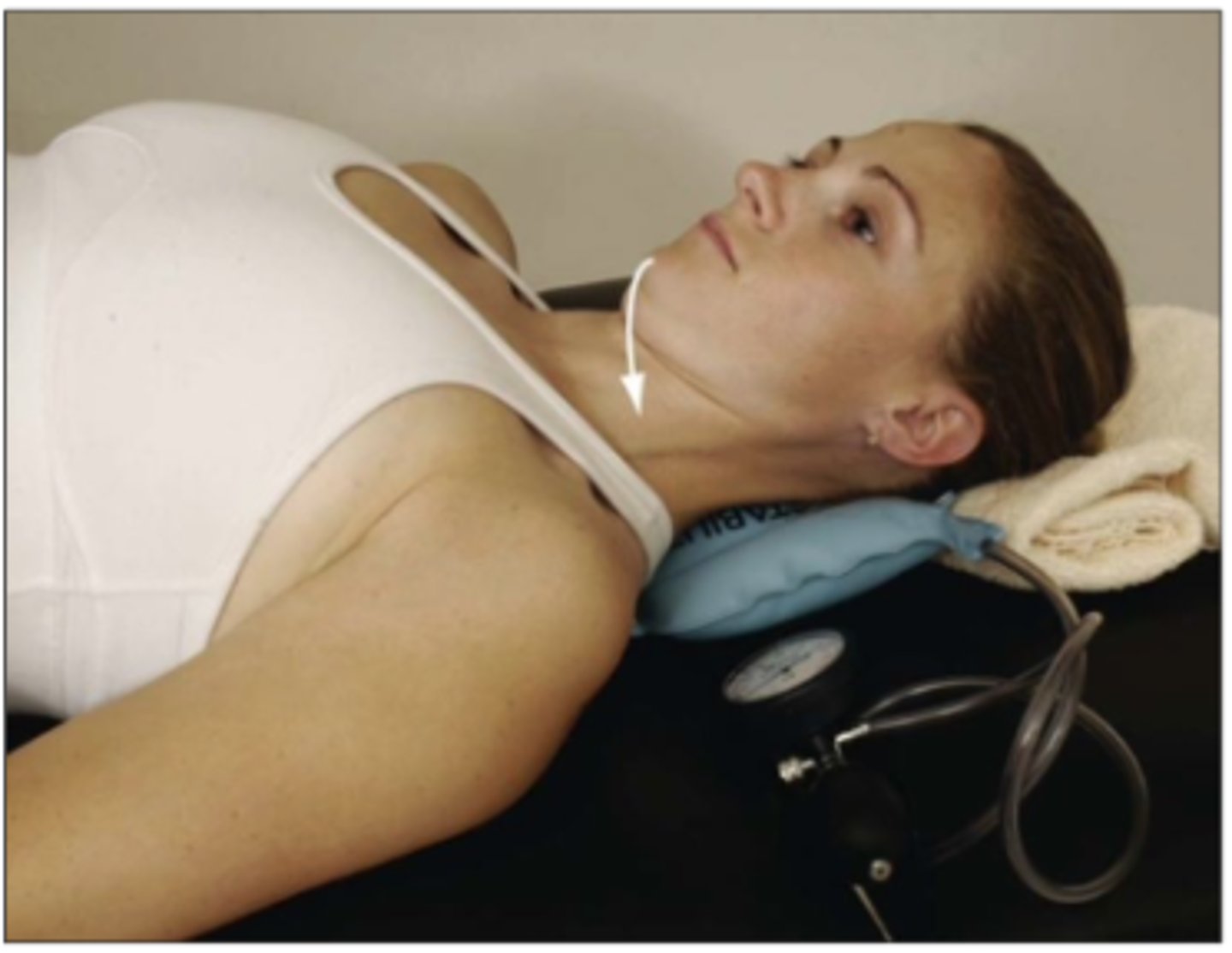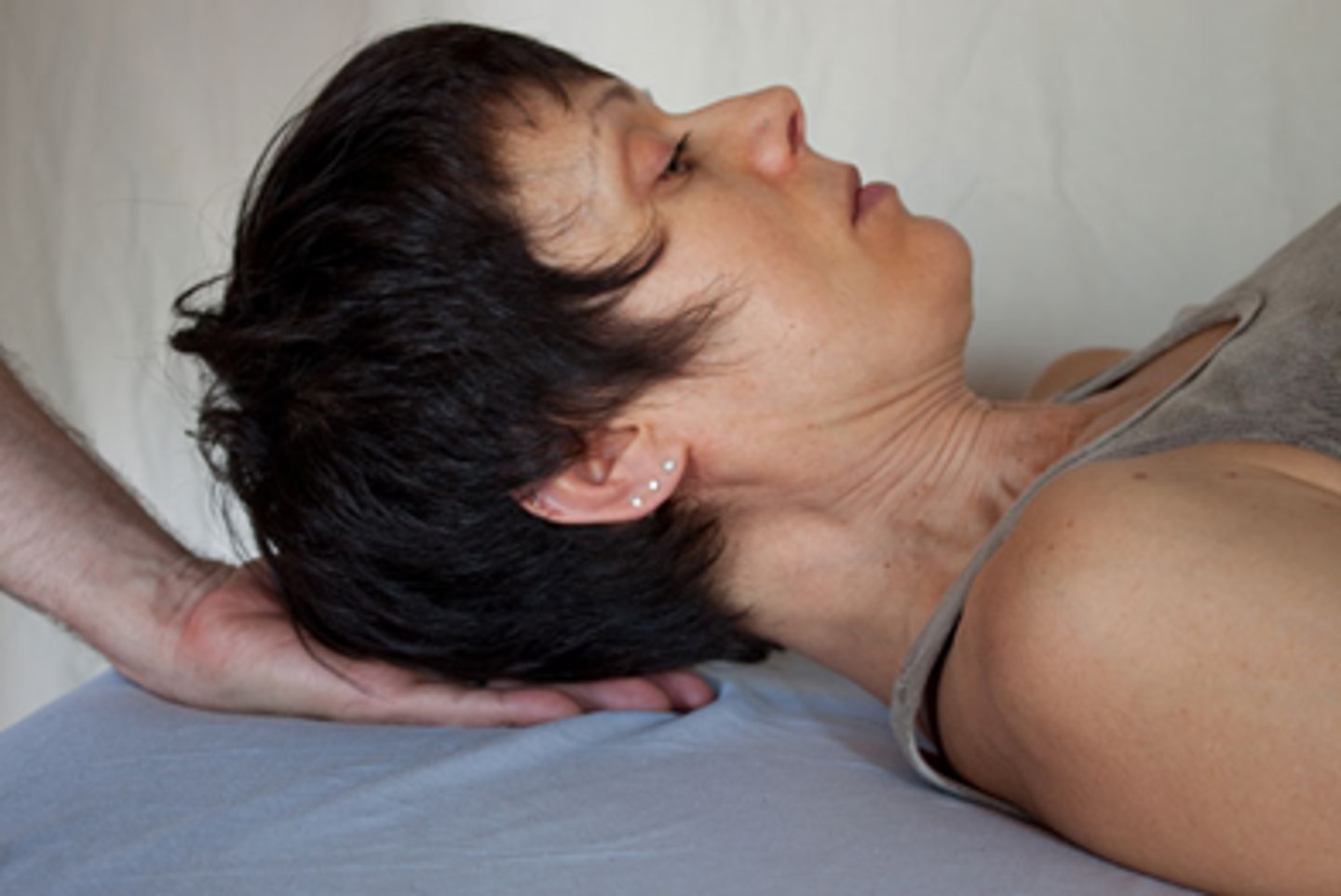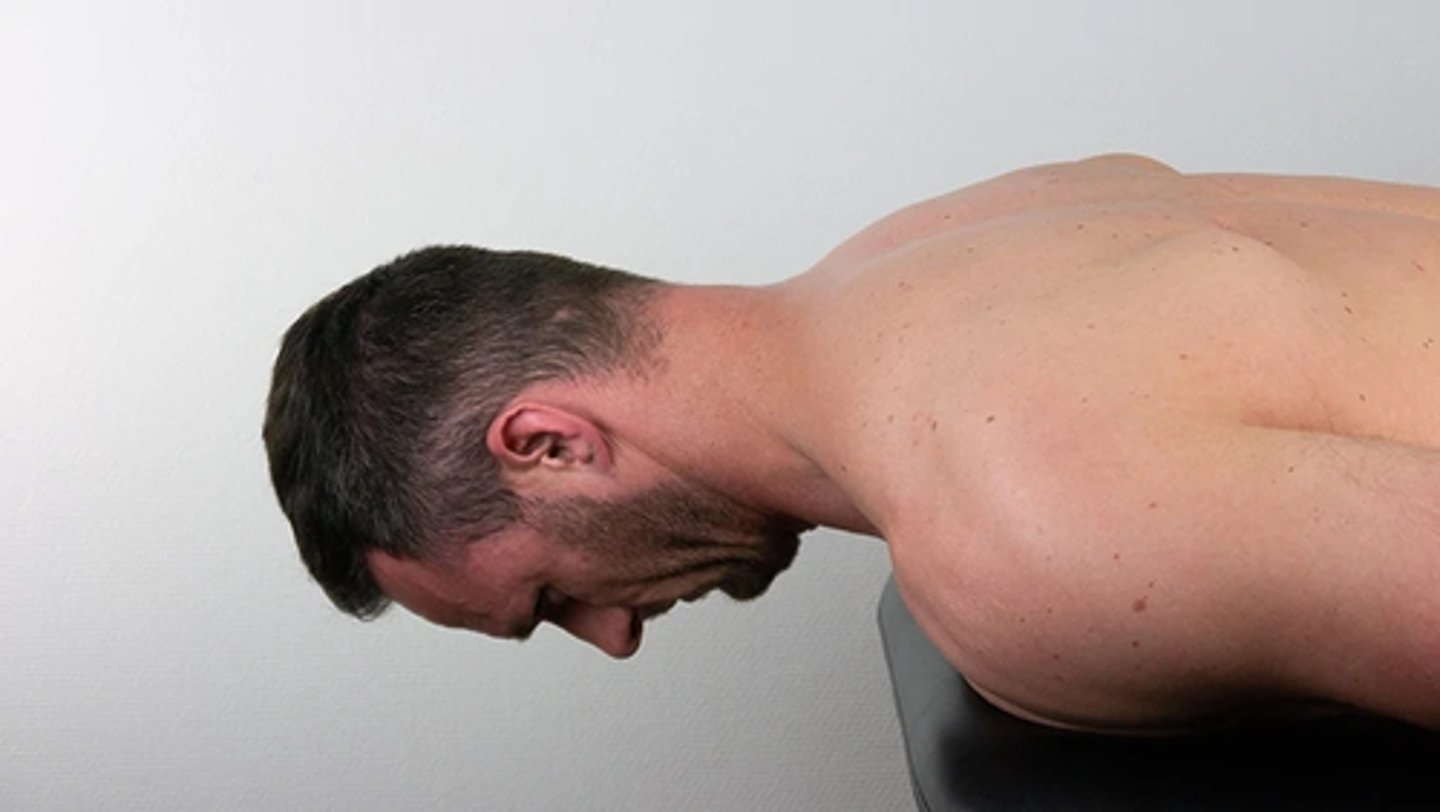cervical dynamic stabilization/motor control
1/20
There's no tags or description
Looks like no tags are added yet.
Name | Mastery | Learn | Test | Matching | Spaced |
|---|
No study sessions yet.
21 Terms
global vs local active stabilizing system for c-spine
- global: superficial flexors and extensors (multi-segmental)
- local: deep flexors and extensors (segmental control)
what are the superficial neck flexors
- SCM
- scalenes
*joint excursion & force
what are the deep neck flexors
- longus capitis (flexes head on neck)
- longus colli
*stability & support cervical lordosis
what are the superficial neck extensors
- splenius capitus
- semispinalis capitus
*joint excursion & force
what are the deep neck extensors
- multifidi, rotatores
- semispinalis cervicis
*proprioceptive feedback mechanism
what happens when deep cervical flexors lose endurance and strength?
superficial substitute
overuse of ____ and weakness of _____ in presence of neck pain
- levator scap
- upper trap
cervicogenic headaches show a positive response to training of what group of muscles?
DNF
atrophy of what muscle group is found in patients with neck pain related to whiplash?
DNE
craniocervical flexion test
- deep cervical flexor strength/control
- place BP cuff behind neck, abuts occiput
- inflate to 20 mmHg
- tell pt to tuck chin in and nod
- pt increases by 2 mmHg each time they nod (hold 10 seconds)
- relax back to 20mmHg in between
- normal: change in 10mmHg w/ 10 second hold

common substitutions for craniocervical flexion test
- superficial cervical flexor use
- neck retraction
- performed quickly and w/o control
- too forceful
- teeth clenched
- holding breath
- too much movement
findings for craniocervical flexion test for those with chronic neck pain
only able to produce 2-4 mmHg
deep neck flexor endurance test
- pt performs maximal chin tuck and lifts ~1in off table
- pt holds position
- PT focuses on neck folds; when folds begin to separate >1 sec, test ends

cervical extensors endurance test
- prone, head and neck just past edge of table w/ CT junction stabilized
- sustain chin tuck for 20 secs
- loss of chin tuck = superficial extensor dominance (weak deep)
- neck moves into flexion/can't hold head up = weak deep and superficial

before work on endurance of cervical muscles you must
work on motor control (selective recruitment of DNF)
motor control phase of craniocervical flexion exercise
- 20-30 mmHg, increments of 2
- 5 sec x 5 with 15-30 sec rest
- stop at form fatigue
endurance phase of craniocervical flexion exercise
- start where pt can hold w/o compensation for 10 secs
- 10 sec x 10 with 5 sec rest
- stop at form fatigue
(progress to holding with UE/scapular muscle exercises)
what is the last phase of craniocervical flexion exercise?
functional
for cervical stabilization, what are different ways to work on chin tuck/DNF?
- sitting
- supine
- prone
- UE motions/resistance
- functional movements
- unstable surfaces
examples of chin tuck in standing with UE exercise
- pulldowns
- rows
- wall push ups
- Bilateral shoulder ER
- shoulder flexion (uni vs bi)
examples of cervical stabilization program for DNE w/ UE exercise
- prone with head over table, keep neck extended
- perform Is, Ys, and Ts